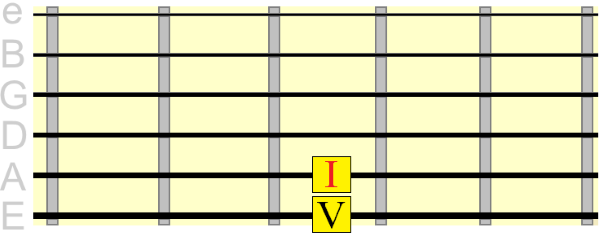Dominant (5) Chord Function
As we looked at in the video, the 5 chord (often represented using the numeral V) plays an important role in establishing and re-affirming a key center.
The 5 provides a direct route back to our "home" or I chord (also called the tonic).
For example, in the key of C major, Cmaj would be our 1 chord and Gmaj would be our 5 chord.
If we played a typical 1 4 5 sequence - Cmaj / Fmaj / Gmaj - you should be able to hear how Gmaj creates tension, or a "pull" back to the home/tonic of Cmaj. If you hang on that Gmaj chord, the tension builds even more.
Another common "cadence" (a resolving sequence of chords), especially in jazz, is 2 5 1 - Dm / Gmaj / Cmaj.
Again, the Gmaj 5 chord creates a "gravitational pull" to the key affirming chord of Cmaj. That's not to say it HAS to go there, but there's a natural flow of tension and resolution when it's used in this way. It can also work in minor keys, where a minor chord is the tonic or i (lower case numeral for minor!).
This is the tension-resolution function of the 5 and 1 chords - arguably the most important relationship in tonal music.
In jazz, this 5 chord tension is enhanced by extending the chord, first to a dominant 7th (e.g. G7) and adding additional tones to the basic chord (e.g. G9, G13, G13♭9, Gaug7, Gsus9). We'll look at all these interesting chord forms in a bit.
Finding The 5 Chord On Guitar
Related chord positions are easiest to visualise on the neck by referencing the bass roots of their shapes.
For example...
In the below diagram, we have our tonic chord root on the 6th string. From this, we can visualise the 5 chord root two frets higher on the 5th string...

In the below diagram, our tonic root is on the 5th string. From this, we can visualise the 5 chord root directly beneath it (same fret), on the 6th string...

These related positions are movable, so the frets we position them at are determined by the key in which we're playing.
Jazz Dominant Chord Chart
Let's go through some dominant jazz voicings that sound good on the 5 position. In the below charts, you can choose either the interval maps of the chords or the fingering using the tabs...
6th String Root


5th String Root


Try Using These Chords In Your Own Music
Once you have an ear for extended and altered dominant chords, and are comfortable with fingering the shapes, try incorporating them into your own music.
These chords aren't just good for jazz. They also work well in blues, funk, soul, bossa nova and other jazz-influenced styles. Even in "middle of the road" rock and pop songs, you can throw in some of these chords for a little extra spice!
